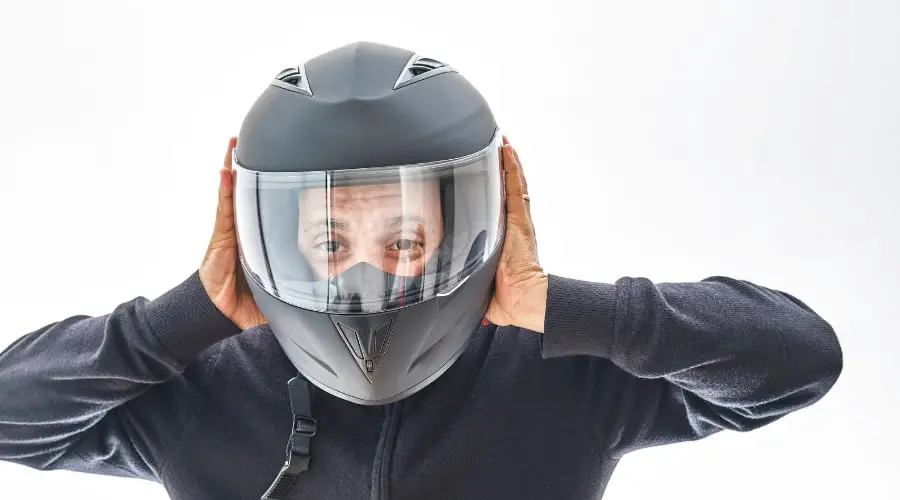In a world where personal safety is a growing concern, the need for effective protective gear has become paramount. Among various protective equipment, bulletproof helmets offer a critical layer of defense, particularly in high-risk situations. In this article, we will explore what helmet can stop a bullet?

Understanding Bulletproof Helmets
Bulletproof helmets, also known as ballistic helmets, are specially designed headgear that offers protection against ballistic threats. These threats can include bullets, shrapnel, and other projectiles that pose a significant risk to the wearer’s head. Bulletproof helmets safeguard military personnel, law enforcement officers, and individuals operating in high-risk environments.
Types of Bulletproof Helmets
Bulletproof helmets are available in various levels of protection, which are classified according to the National Institute of Justice (NIJ) standards. The levels range from I to IV, with higher levels offering increased resistance against more powerful ammunition.
- Level I Helmets: These helmets offer protection against low-velocity handgun rounds.
- Level II Helmets: Designed to withstand medium-velocity handgun rounds.
- Level III Helmets: Can stop high-velocity handgun and rifle rounds.
- Level IV Helmets: These helmets provide the highest level of protection, capable of stopping armor-piercing rifle rounds.
Materials Used in Bulletproof Helmets
Bulletproof helmets are constructed using a combination of materials that work together to absorb and dissipate the impact energy of a bullet. Here are the commonly used materials:
- Aramid Fibers: Aramid fibers, such as Kevlar, are strong and lightweight materials widely used in bulletproof helmets. These fibers offer excellent resistance to penetration and are effective in stopping various types of bullets.
- UHMWPE (Ultra-High-Molecular-Weight Polyethylene): UHMWPE is another popular material used in bulletproof helmets. It combines high strength with low weight, making it an ideal choice for helmets that need to provide reliable protection without compromising comfort.
Types of Bulletproof Helmets
Bulletproof helmets come in different types and designs to cater to various needs and threat levels. Understanding the different types can help you make an informed decision when choosing the right helmet for your specific requirements.
- Level I Helmets: Level I helmets are the entry-level option, offering basic protection against low-velocity handgun rounds. They are lightweight and provide essential coverage for situations with relatively low risk of ballistic threats.
- Level II Helmets: Designed to withstand medium-velocity handgun rounds, Level II helmets provide a step up in protection compared to Level I. They offer increased resistance and are suitable for scenarios where there is a higher risk of encountering more powerful handguns.
- Level III Helmets: Level III helmets are viable if you require enhanced protection. Capable of stopping high-velocity handgun rounds and some rifle rounds, these helmets offer a higher level of defense against ballistic threats. Law enforcement officers and military personnel commonly use them in volatile environments.
- Level IV Helmets: Level IV helmets provide the highest level of protection available in bulletproof helmets. They are designed to stop armor-piercing rifle rounds and offer exceptional resistance against powerful ammunition. These helmets are typically utilized by specialized military units and individuals operating in high-risk combat situations.
Materials Used in Bulletproof Helmets
The effectiveness of a bulletproof helmet heavily relies on the materials used in its construction. Here are some of the key materials employed in the manufacturing of bulletproof helmets:
- Aramid Fibers: Aramid fibers like Kevlar are commonly used for their remarkable strength and lightweight properties. These fibers exhibit excellent resistance to penetration, making them highly effective in stopping bullets. Aramid fiber-based helmets provide a balance between protection and comfort, which is crucial for prolonged use.
- UHMWPE (Ultra-High-Molecular-Weight Polyethylene): UHMWPE is a popular material known for its exceptional strength-to-weight ratio. Helmets incorporating UHMWPE offer reliable protection without adding excessive weight, ensuring maximum comfort for the wearer. The high molecular weight of this polyethylene variant provides excellent energy absorption capabilities.
- Ceramics: Ceramics, such as alumina or boron carbide, are often used in bulletproof helmets to reinforce their resistance against projectiles. Ceramic plates are placed within the helmet’s structure to enhance its ability to stop bullets by breaking apart and absorbing the impact energy. This additional layer of protection is particularly valuable against high-velocity rifle rounds.
Considerations When Choosing a Bulletproof Helmet
Selecting the right bulletproof helmet requires careful consideration of various factors to ensure optimal protection and usability. Here are some key aspects to keep in mind:
- Protection Level: Assess the level of threat you may encounter to determine the appropriate protection level for your helmet. Consider the types of projectiles commonly encountered in your environment to make an informed decision.
- Weight and Comfort: Since helmets are worn for extended periods, choosing one that strikes a balance between protection and comfort is essential. Lightweight materials and ergonomic designs can significantly enhance wearer comfort without compromising safety.
- Compatibility with Accessories: Evaluate whether the helmet allows for the attachment of accessories such as visors, communication devices, or night-vision goggles. Compatibility with additional equipment can enhance functionality and versatility in different situations.
- Durability: Ensure that the helmet is built to withstand harsh conditions and frequent use. Look for features like impact resistance, weather resistance, and durability to ensure a long-lasting and reliable product.
Bulletproof Helmets and Their Effectiveness
While bulletproof helmets provide crucial protection, it’s important to understand their limitations. Despite their capabilities, no helmet can offer absolute protection against all ballistic threats. It’s essential to be aware of the following considerations:
- Limitations of Bulletproof Helmets: They have specific limitations regarding the type of ammunition they can effectively stop. Each protection level has its threshold, and helmets can only withstand projectiles within those limits. Choosing a helmet that aligns with your potential threats is crucial.
- Real-World Scenarios and Effectiveness: The effectiveness of a bulletproof helmet in real-world scenarios can be influenced by various factors, including the angle of impact, distance from the shooter, and the type of ammunition used. It’s important to remember that while helmets provide valuable protection, they may not guarantee complete safety in every situation.
Popular Bulletproof Helmet Brands
When considering a bulletproof helmet, it’s beneficial to be familiar with reputable brands known for their quality and reliability. Here are three popular bulletproof helmet brands:
- Brand A: Known for their innovative designs and commitment to superior protection, Brand A offers a wide range of bulletproof helmets suitable for different levels of threats. They prioritize comfort and durability without compromising performance.
- Brand B: With a long-standing reputation in the defense industry, Brand B specializes in advanced ballistic solutions. Their bulletproof helmets are designed to meet rigorous standards and undergo rigorous testing to ensure top-notch performance.
- Brand C: Brand C is a trusted name in the law enforcement and military sectors. They offer a diverse selection of bulletproof helmets, catering to various protection levels and user requirements. Their helmets are known for their ergonomic design and optimal balance between protection and comfort.
Maintenance and Care of Bulletproof Helmets
Proper maintenance and care are essential to ensure the longevity and effectiveness of your bulletproof helmet. Consider the following tips:
- Cleaning and Storage: Regularly clean your helmet using mild soap and water, avoiding abrasive materials that could damage its surface. Ensure it’s thoroughly dry before storing it in a cool, dry place away from direct sunlight.
- Inspection and Maintenance: Conduct routine inspections to check for any signs of wear, tear, or damage. Follow the manufacturer’s guidelines for maintenance, including replacing worn-out components and straps. Regularly inspect the inner padding and suspension system to ensure optimal fit and comfort.

The Future of Bulletproof Helmets
As technology continues to advance, the future of bulletproof helmets looks promising. Here are a couple of potential developments:
- Technological Advancements: Ongoing research aims to improve the materials used in bulletproof helmets, resulting in lighter yet stronger options. Advanced composites, nanomaterials, and impact-absorbing technologies may enhance the overall performance of helmets in the future.
- Integration of Smart Features: The integration of smart features such as built-in communication systems, heads-up displays, and sensors is being explored. These features could provide real-time data, enhance situational awareness, and improve overall functionality.
Related: Can any helmet stop a bullet?
Frequently Asked Questions
Can a bulletproof helmet completely stop any bullet?
Bulletproof helmets have specific protection levels and can stop bullets within those thresholds. However, no helmet can guarantee complete protection against all ammunition types.
How much does a bulletproof helmet weigh?
The weight of a bulletproof helmet varies depending on its design, materials used, and protection level. Generally, bulletproof helmets can range from a few pounds to around 5-7 pounds. It’s important to balance protection with comfort to ensure prolonged wearability.
Are bulletproof helmets comfortable to wear for long periods?
Manufacturers strive to enhance comfort in bulletproof helmets through ergonomic designs, adjustable straps, and padding systems. However, extended wear of any helmet can cause discomfort due to factors such as heat and pressure. It’s recommended to take short breaks when possible and select a helmet that fits well to minimize discomfort.
Can I attach accessories to a bulletproof helmet?
Many bulletproof helmets feature accessory rails or mounting points, allowing users to attach accessories like visors, communication devices, or lighting systems. Ensure compatibility with the specific helmet model and consider the added weight and balance when attaching accessories.
Are there any legal restrictions on owning bulletproof helmets?
The regulations regarding the ownership and use of bulletproof helmets vary from country to country and may also differ based on local laws and regulations. It’s important to research and adhere to the legal requirements in your jurisdiction.
Conclusion
Bulletproof helmets play a vital role in protecting individuals from ballistic threats. Understanding the different types, materials used, and considerations when choosing a helmet is crucial for making an informed decision. While bulletproof helmets have their limitations, they offer a significant layer of defense in high-risk environments. Remember to prioritize comfort, durability, and compatibility with accessories when selecting a helmet.
Helmetslab is a website that focuses on providing in-depth reviews and information about different types of helmets, including motorcycle helmets and others helmets. I am writing a post with proper research on the info that helps helmet users.
